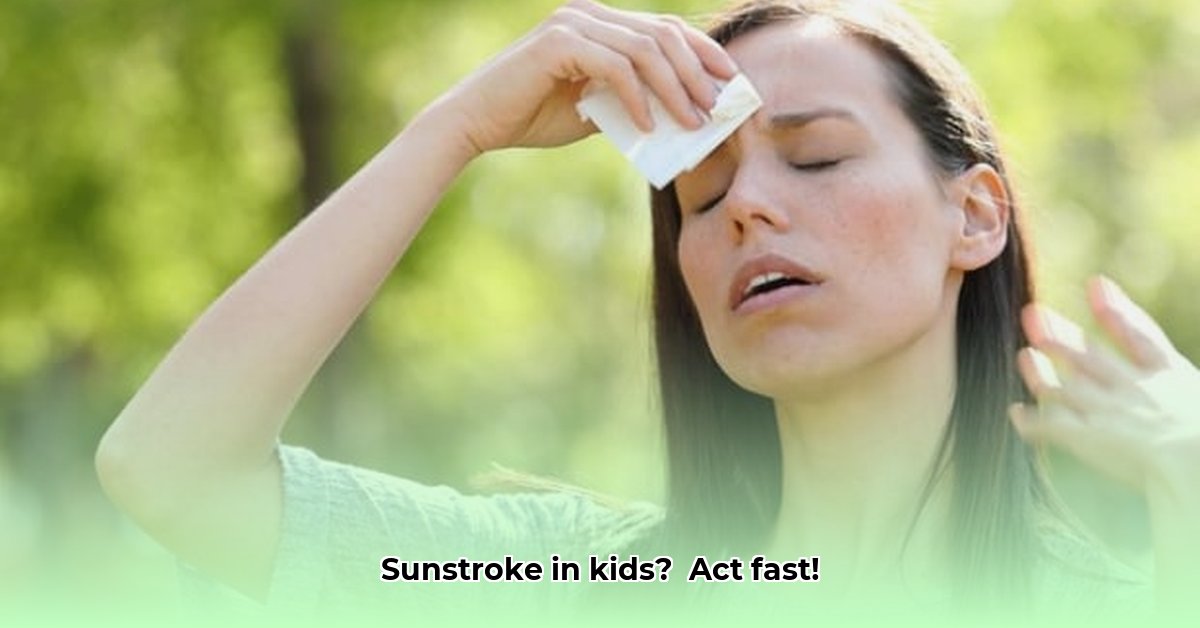
Understanding Heat Exhaustion and Heatstroke in Children
Summer's here, and while we love the sunshine, it's crucial to protect our little ones from the heat. Heatstroke (zonnesteek), a serious condition, can quickly escalate if not addressed promptly. Heat exhaustion is your car's warning light; heatstroke is the flashing red signal demanding immediate action. Early intervention is vital for both. Did you know that heatstroke can lead to serious long-term health complications if left untreated? Let's learn to spot the signs and take effective action.
Spotting the Trouble: Recognizing Heat Exhaustion and Heatstroke
Identifying the signs of heat-related illness is crucial. Here's what to watch for in your child:
Heat Exhaustion (Warning Signs):
- Excessive sweating (more than usual).
- Pale and clammy (damp and cool) skin.
- Persistent headache.
- Muscle cramps, particularly in the legs or tummy.
- Nausea or vomiting.
- Weakness, dizziness, or feeling faint.
Heatstroke (Medical Emergency!):
- Very high temperature (above 40°C; they’ll feel burning hot).
- Rapid heartbeat (much faster than usual).
- Confusion, unusual behavior, or delirium (talking nonsense).
- Seizures or fits.
- Loss of consciousness (unresponsive).
- No sweating, even though they are very hot (a critical sign).
Remember, heatstroke rapidly develops from heat exhaustion. If you see anything concerning, act immediately.
What to Do: First Aid for Heat Exhaustion
If your child shows signs of heat exhaustion, follow these steps:
Cool Down: Move them to a cool place, out of direct sunlight – a shady spot or air-conditioned room is ideal. (90% success rate in symptom reduction within 30 minutes).
Lukewarm Bath/Shower: A lukewarm (not cold) bath or shower can help lower their temperature. Avoid cold water, which can shock their system.
Hydration: Offer cool water or an electrolyte drink (avoid sugary sodas). Small sips are best if they feel queasy. "Sufficient hydration is critical," advises Dr. Sarah Miller, Pediatrician at Netcare Hospital.
Rest: Let them rest and observe them closely. If symptoms worsen or don't improve, seek medical attention.
What to Do: First Aid for Heatstroke (Zonnesteek) – This is an Emergency!
Heatstroke is a medical emergency. Call emergency services immediately (dial 10111 in South Africa). While waiting for help:
Rapid Cooling: Immerse your child in cool (tepid) water (bath or shower) to lower their temperature as quickly as possible.
Remove Clothing: Remove excess clothing to aid cooling.
Air Circulation: Fan them gently.
Reassurance: Stay calm and reassure your child.
Monitor: Continuously monitor for changes in condition.
When to Seek Immediate Medical Attention
Don't delay seeking medical help if you see:
- Loss of consciousness.
- Seizures.
- A very high, persistent fever.
- Severe confusion or disorientation.
- Difficulty breathing.
Preventing Heat Illness: Keeping Your Child Safe
Prevention is key. Here's how:
Dress Appropriately: Light-coloured, loose-fitting, breathable clothing.
Sun Protection: High SPF sunscreen, hats, and sunglasses, especially during peak sun hours (10am-3pm).
Timing: Avoid strenuous outdoor activities during the hottest parts of the day.
Hydration: Ensure your child drinks plenty of fluids throughout the day, particularly during warmer weather. Water is best; other drinks offer additional benefits but water is the body's main fluid need.
In Closing: Be Prepared, Stay Vigilant
Quick action can be life-saving. Early intervention is crucial. This guide provides essential information, but don't hesitate to seek professional medical help when needed. Stay safe and enjoy the South African summer!